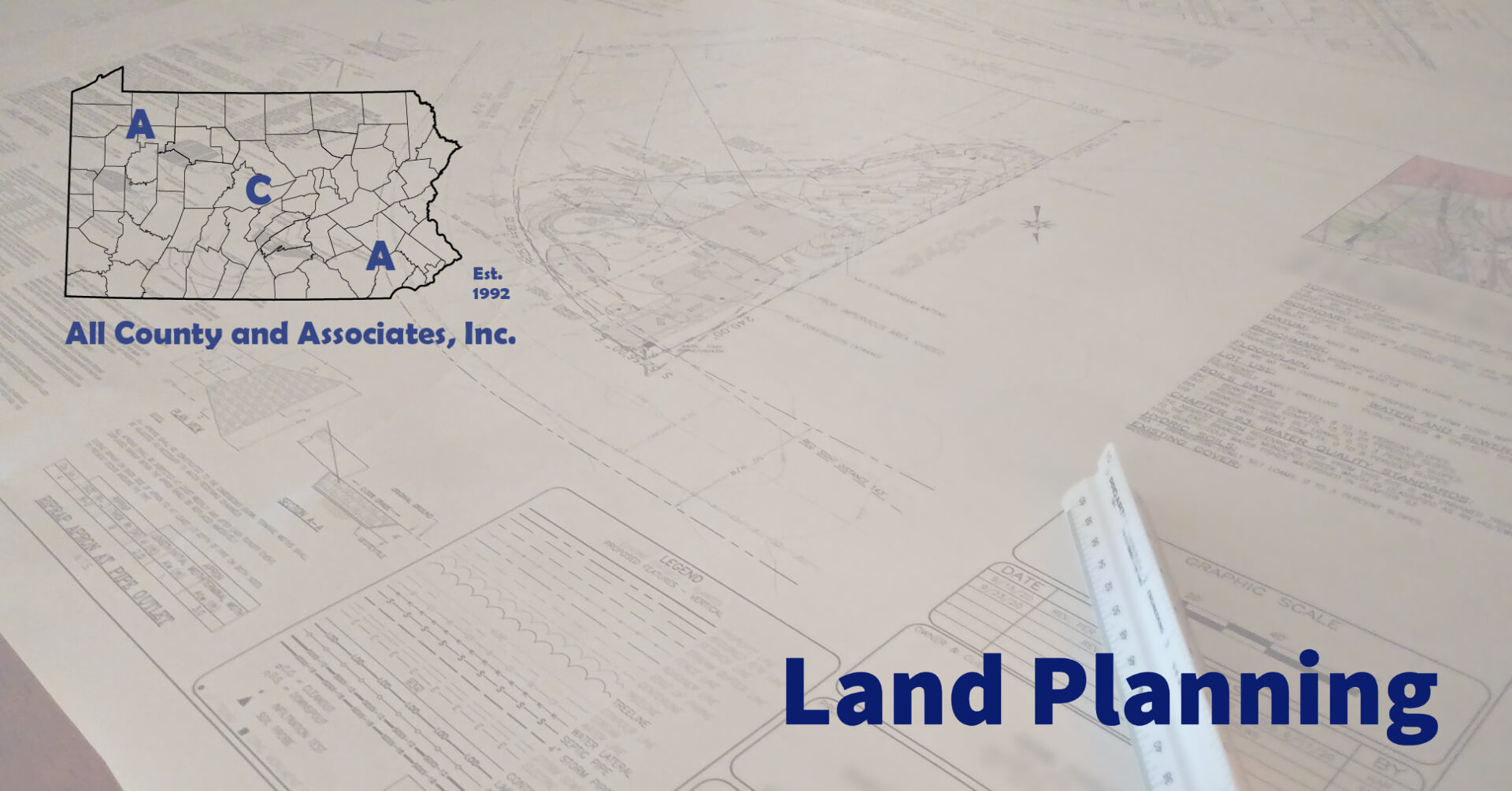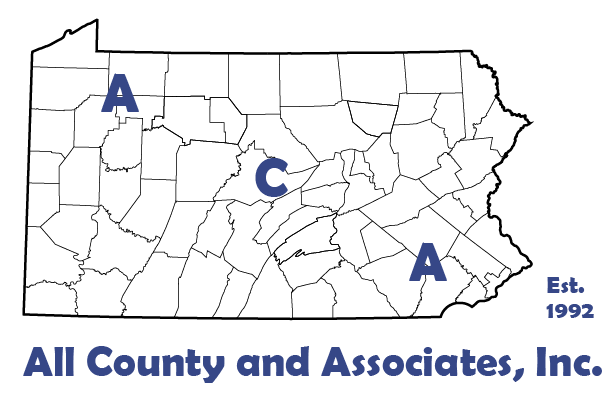
Today marks the end of our seven-part series on land planning in Pennsylvania. Our last one is bit of a unique one but has a big impact on our communities. It is agricultural planning. In short, we will take a look at the different elements, Acts and programs that impact agricultural operations and planning.
Introduction
Pennsylvania has a rich history in agriculture. It was the first economic strength of the Commonwealth. Today, it is still the commonwealth’s largest industry. Thus, it has had to find a way to cohabitate with suburban development. Today, Pennsylvania consists of 67 counties. These counties contain 56 cities, 958 borough one town and 1,547 townships. As these municipalities grew, they saw development as a way to extra tax revenue. However, that growth came at the expense of agriculture. Because of this impact the General Assembly has passed several Acts. These Acts manage development and preserve valuable agricultural land. So, let’s take a look at these different acts and their impacts on development and land planning.
Regulations and Acts
Right to Farm
As suburbia encroached on agriculture, a rise of nuisance lawsuits occurred. These lawsuits cost farms insurmountable costs. Therefore, states enacted protections for farmers. In 1982, Pennsylvania passed its first right-to-farm act. As a result, the Act aims to offer three protections:
- Municipalities must exclude normal agricultural operations from the definition of public nuisance
- Places limits on nuisance actions against agricultural operations
- Limits the ability to restrict direct commercial sales of agricultural commodities
Firstly, this prevents biased regulations against normal agricultural operations. This restriction does have limitations such as restrictions set forth in zoning ordinances. The legislature also protects the normal agricultural operations from suits brought by neighbors. In these cases, the farms that have operated, lawfully, for one year without large changes. For altered farms, one year must pass from the alteration. Additionally, a nutrient management plan must cover the alteration. Finally, the Act prohibits municipalities to limit commercial sales. This protection is for agricultural commodities only. As such, the landowner must produce at least 50% of the commodity. Finally, these sales must occur on the property owned and operated by the landowner.
Agricultural Area Security Law
Next, the Assembly looked provide piece of mind, security, to the farming community. The Agricultural Area Security Act was the answer. The Act established a district, of at least 250 acres with municipal or county boundaries. The acreage may sound large, but the tracts of land do not need to be contiguous. The security area (ASA) is a partnership between governing bodies and landowners. That said, it provides protections to the latter from the governing bodies. In essence, it is a community giving its support to ensure agriculture remains a part of their future.
There are two primary protections granted to the landowners by an ASA. First, is a limitation on local regulation. This ensures ordinances do not place unreasonable restrictions on farm operations or structures. Secondly, it provides the aforementioned limitation on public nuisance. Next is a protection against condemnation of land. In this case, the protection does not prohibit eminent domain. Instead, it requires more scrutiny. In doing so, the request may have no impact on operations and no other alternative exists. There are emptions for existing roads, or underground sewer and water lines. In the latter, the construction occurs with no surface disturbance.
Environmental Regulations
With agriculture being such a big part of the state, it can have large environmental impacts too. To reduce the impacts, the commonwealth has passed a series of regulations. In a lot of cases, these regulations fall under existing Acts. Here is a list of the key environmental regulations in PA Code, Title 25:
- Water Resources Planning Act
- Agricultural Erosion and Sediment Control Plans
- Manure Management
- Odor Management (Pa. Code 83.701 – 83.707)
Besides these state regulations, the federal government has agricultural regulations as well. These delegated regulations come from the US EPA. Large farms fall under concentrated feeding operations or CAFOs. The commonwealth also has a program for smaller farms. These farms are concentrated animal operations or CAO. To learn more about either of these programs, visit the DEP program website.
Agricultural Zoning
As we discussed in previous posts, zoning is the basic building block for a community. This is true for agricultural zoning, but there is one major difference. Agricultural zoning protects farmland from adverse effects of incompatible uses. Agricultural planning protects prime soils, maintains large parcels and minimizes use conflicts. To do this, most communities use non-exclusive agricultural zoning. In these areas, construction can include non-farm dwellings. Additionally, areas of low-quality soil can afford development of conditional uses. To limit the dwelling density, planners have two options. First is a minimal lot size, which is usually 10 acres or greater. The second is an area-based allocation. This method determines the number of dwellings as a percentage of the original parcel.
Land Preservation
There are two primary programs for preserving farmland in Pennsylvania. The first program is Clean and Green. This program provides tax incentives. To be in this program the parcel must be greater than 10 acres of continuous land. Additionally, it must have a yearly income of at least $2,000. Finally, it must have one of three uses. These uses are agricultural, agricultural reserve or forest reserve. In return for the tax incentives, the landowner agrees to maintain the land for the operation. There are some instances where the property division occurs but they have limitations. A penalty exists if the landowner fails to maintain operation or improperly develops. The penalty is seven-years’ worth of rollback taxes.
The second program utilizes easements. These easements are commonly referred to as an agricultural conservation easement. In this program, the landowner is selling the future right to sell the land to a non-agricultural organization. Thereby ensuring the property remains in agricultural use. The property must meet certain criteria. These include that it must be in an ASA of at least 500 acres. Additionally, the property must be at least 35 contiguous acres. Next, the property must be in prime agricultural land. Finally, the land must contain at least 50%, or a minimum of 10 acres, of harvested land.
Conclusion
This completes our seven-part series on land planning in Pennsylvania. We understand some of you have read individual articles, but hope you take the time to read them all. This series provided a quick but detailed looked at each section. The goal was to increase the understanding of the steps in the process. Land planning is more than just wanting to build something, it is a maze of regulations and regulatory approvals. Hopefully by having this series as a resource, you are better equipped for future projects.
Who is ACA?
Started in 1992 and located in Chester County, PA ACA has grown to become a full-service civil engineering firm. Today, we merge professional services with practical knowledge for residential and commercial projects. No matter the scale, from installing a fence, to building a structure or developing land, you need permits. Because the approval process includes many permits and agencies, it can be a headache. Working with ACA’s full-service team saves you time, money, and headaches. Every step of the way, we are here to support you and educate you about the process. Here are some of the basic services we provide:
Construction Management | Civil Engineering | Environmental Permitting | Septic System Testing and Design | Land Surveying | Wetland Delineations and Mitigation
Please feel free to browse our website or if working on a project or need help, contact us at (610) 469-3830.
Also, join the conversation on: Facebook | LinkedIn
